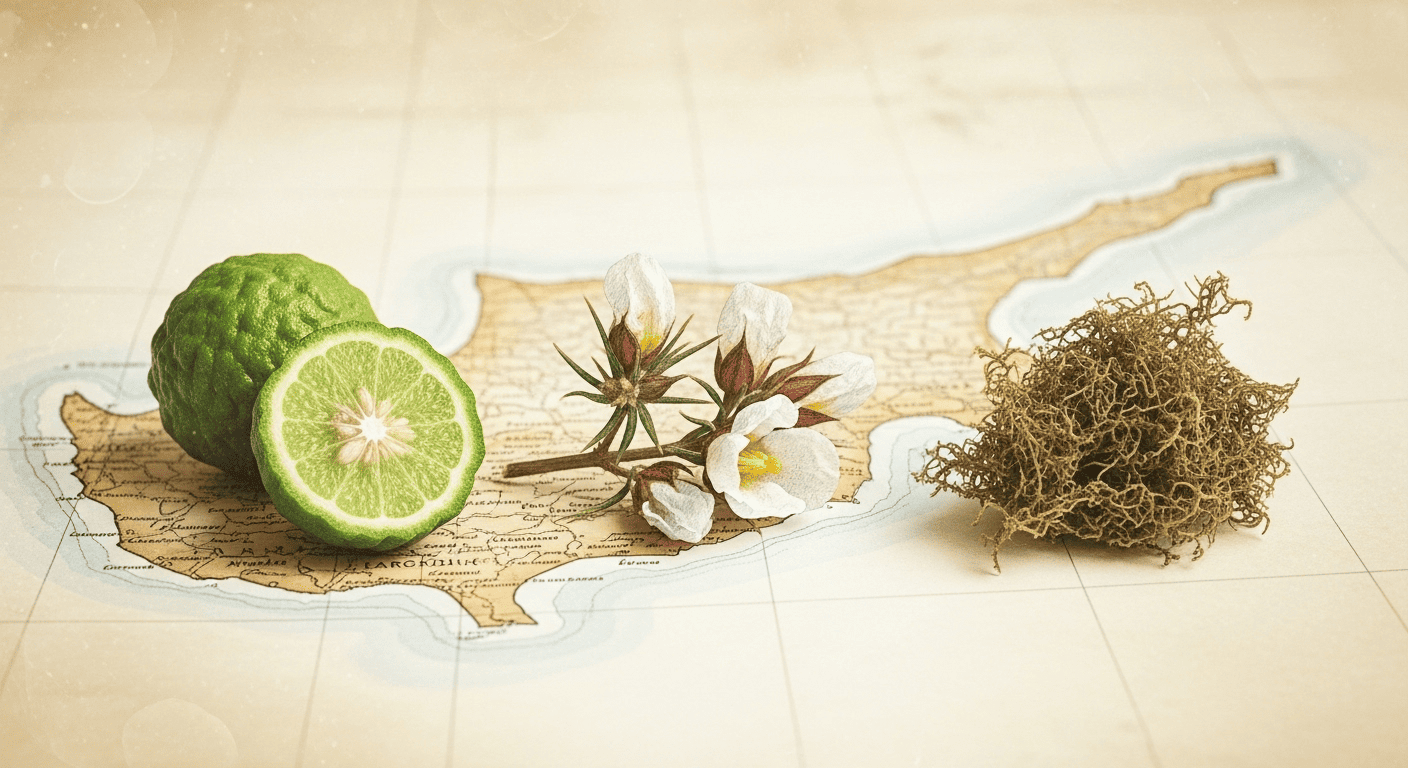Certain aromatic concepts are not merely scents; they are tectonic shifts in the landscape of perfumery, creating new continents of creative possibility. The chypre accord represents one such seismic event, a paradigm-shifting idea that reconfigured the very definition of elegance. Its name whispers of Mediterranean origins, but its definitive, modern identity was forged in 1917 by the audacious vision of François Coty, a perfumer who acted more like an architect of the invisible.
Coty’s creation, simply named “Chypre,” was less a perfume and more an olfactory thesis. It presented a radical, almost confrontational harmony of opposites, weaving a thread of brilliant citrus through a dark, primal forest floor of moss and resins. This calculated dissonance between light and shadow created an entirely new aromatic language of intellectual sensuality. The formula was so groundbreaking that it didn’t just inspire copies; it established a genre that would become the backbone of sophisticated perfumery for a century.
The enduring power of this accord demonstrates how a well-defined structure can give rise to timeless artistry, a lesson in how foundational greatness inspires future innovation. This same reverence for historical frameworks can be seen today, as pioneers in niche perfumery build upon distinct cultural traditions to forge a new Franco-Arabian legacy in the contemporary scent landscape. Chypre’s story is a powerful reminder that the most profound revolutions are often born from a masterful re-engineering of the classics.
Echoes of an Ancient Isle
Long before it became a cornerstone of French perfumery, the name “Chypre” was a ghost of an idea haunting the scented history of Europe. The term, meaning Cyprus, was tied to aromatic powders and pomades that trickled out of the Mediterranean from the Roman era onward. These early preparations were based on the raw, powerful scents of the island itself, primarily the sun-baked resin of labdanum, blended with other local materials like styrax and aromatic roots.
These ancient products were the ancestors of the modern accord in name only. They were dense, opaque, and linear concoctions, closer to incense than to the multifaceted, sparkling fragrances of the 20th century. Their purpose was to capture an essence, to deliver a potent and straightforwardly resinous aroma without the structured, evolving narrative that Coty would later introduce.
François Coty’s genius was not in excavation but in interpretation. He took the potent mystique of the name and its association with a warm, resinous character and used it as a launching point for something unprecedented. He didn’t seek to replicate a historical formula; he aimed to construct an abstract feeling of island elegance, viewed through the sophisticated, structured lens of modern French artistry.
The Architecture of Contrast
The seismic impact of Coty’s 1917 “Chypre” was due to its revolutionary architecture, an olfactory pyramid built on the deliberate and breathtaking tension between its poles. This precise framework became the non-negotiable blueprint for the entire chypre family, a masterclass in achieving harmony through opposition. It established a dramatic dialogue between a radiant opening and a profoundly shadowy base.
The enduring magic of the accord is this constant, vibrant interplay between its top and bottom notes, which pulls the wearer through a complete emotional arc. This dynamic structure, which defines the genre, relies on a skeleton of specific components working in concert. The essential pillars of this olfactory architecture include:
- The Radiant Overture: A sharp, almost crystalline burst of bergamot, providing a vibrant and energetic citrus welcome.
- The Diplomatic Heart: A soft floral core, typically jasmine or rose, serving to gracefully mediate the accord’s extremes.
- The Shadowy Foundation: The iconic and tenacious base, a trinity of earthy oakmoss, leathery labdanum, and dark patchouli.
It was the electrifying collision between the piercing light of bergamot and the deep, mysterious trinity of the base that constituted the revolution. This specific, high-contrast pairing had never been presented with such clarity and purpose. The result was a scent that felt impossibly chic, intellectually stimulating, and profoundly unlike the straightforward soliflores that dominated the market.
Adaptation in a Modern World
In the decades following its debut, the chypre framework became the undisputed symbol of feminine power and refined taste. The 20th century saw the accord evolve through countless iconic iterations, from the austere leather chypres of the post-war era to the sharp, verdant green chypres of the 1970s. Each new version explored different facets of its character, yet all remained faithful to the central tension of the original blueprint.
The dawn of the 21st century, however, presented the classic chypre with an existential threat. The very soul of the accord, the deep and tenebrous oakmoss, became heavily restricted by fragrance safety regulations due to its allergenic potential. Perfumers were faced with a monumental task: how to rebuild the genre’s foundation now that its most crucial cornerstone was largely forbidden.
This challenge gave rise to the “neo-chypre” or “modern chypre.” In these compositions, the rich, earthy darkness of oakmoss is approximated using a new palette of materials, most often a heavy dose of fractionated patchouli combined with synthetic mossy molecules and clean, diffusive woods. While these modern takes often trade the vintage depth for a brighter, more transparent character, they strive to honor the defining principle of contrast that makes a chypre a chypre.
A Legacy of Tension
The profound influence of the chypre accord permeates modern perfumery far beyond fragrances that are explicitly labeled as such. The core principle it championed—that of building a compelling scent through the beauty of opposition—has been absorbed into the fundamental DNA of fragrance creation. This technique of creating a dynamic journey through olfactory contrast is now a vital tool for artists across all genres.
The conceptual fingerprint of chypre is evident in countless contemporary perfumes. Any fragrance that pairs a bright, fruity opening with a deep, earthy patchouli base, or a sparkling citrus with a dark, brooding woody dry-down, is walking a path that Coty first paved. He taught perfumers and the public alike to appreciate aromatic complexity and find sophistication in a scent that refuses to be just one thing.
Ultimately, the chypre accord is more than a formula; it is a philosophy. Its story is a powerful testament to how a single, brilliantly structured idea can permanently alter the course of an art form. It remains an aspirational benchmark for creativity and balance, a legacy of dynamic tension that continues to challenge and inspire the world of fragrance.
Frequently Asked Questions
A traditional chypre creates a distinct journey. It begins with a vibrant, almost sharp citrus note, most famously bergamot. This bright opening soon softens into a more subdued floral heart, before descending into its signature base: a warm, dry, and earthy foundation with a rich, forest-like quality from oakmoss and a deep, ambery warmth from labdanum.
The name is the French translation for the island of Cyprus. For centuries, Cyprus was renowned in Europe for its aromatic exports, particularly resinous materials used in early perfumes that were often sold under the name “Chypre.” François Coty masterfully co-opted this name, lending its ancient, luxurious connotations to his thoroughly modern and abstract creation in 1917.
Due to stringent international regulations on its use as a potential skin allergen, the quantity of natural oakmoss in most contemporary perfumes is severely limited. To recreate the classic effect, modern perfumers typically rely on a clever blend of other materials, primarily a clean, earthy patchouli and specialized synthetic molecules that mimic mossy notes, to build the characteristic dark base.

